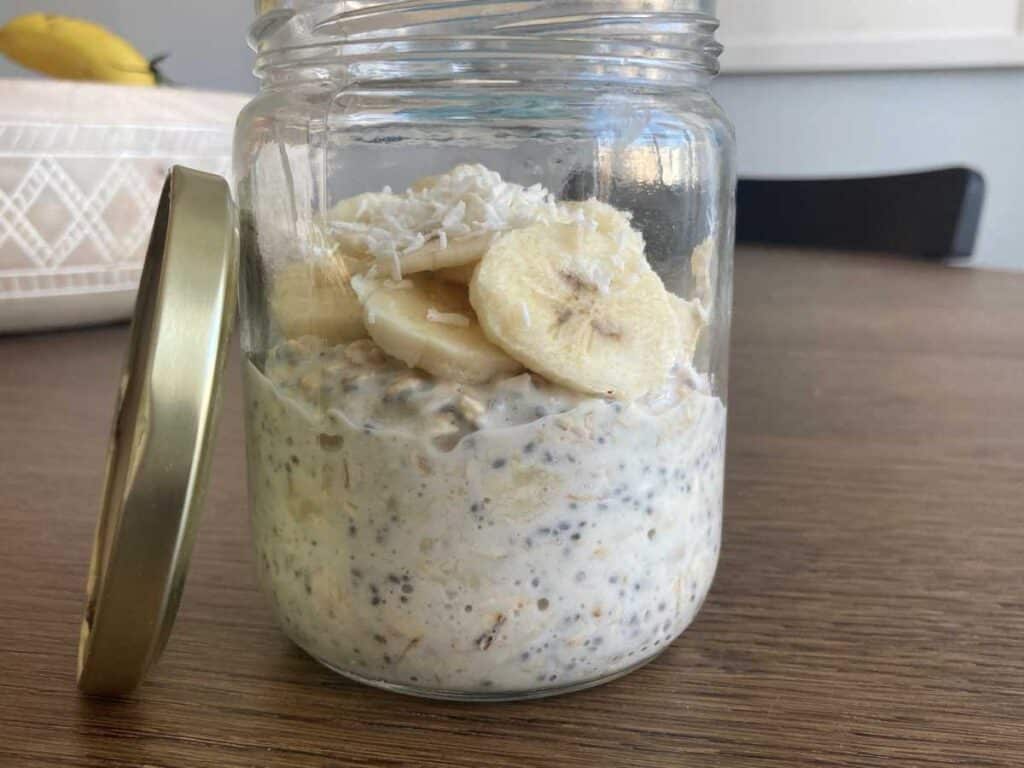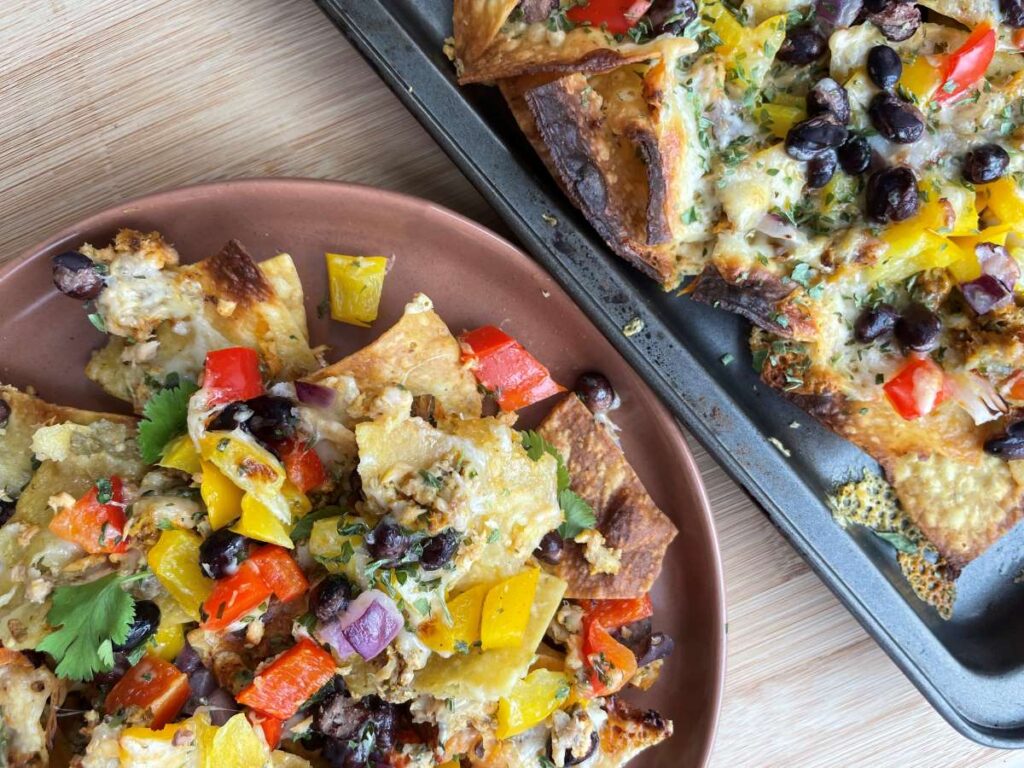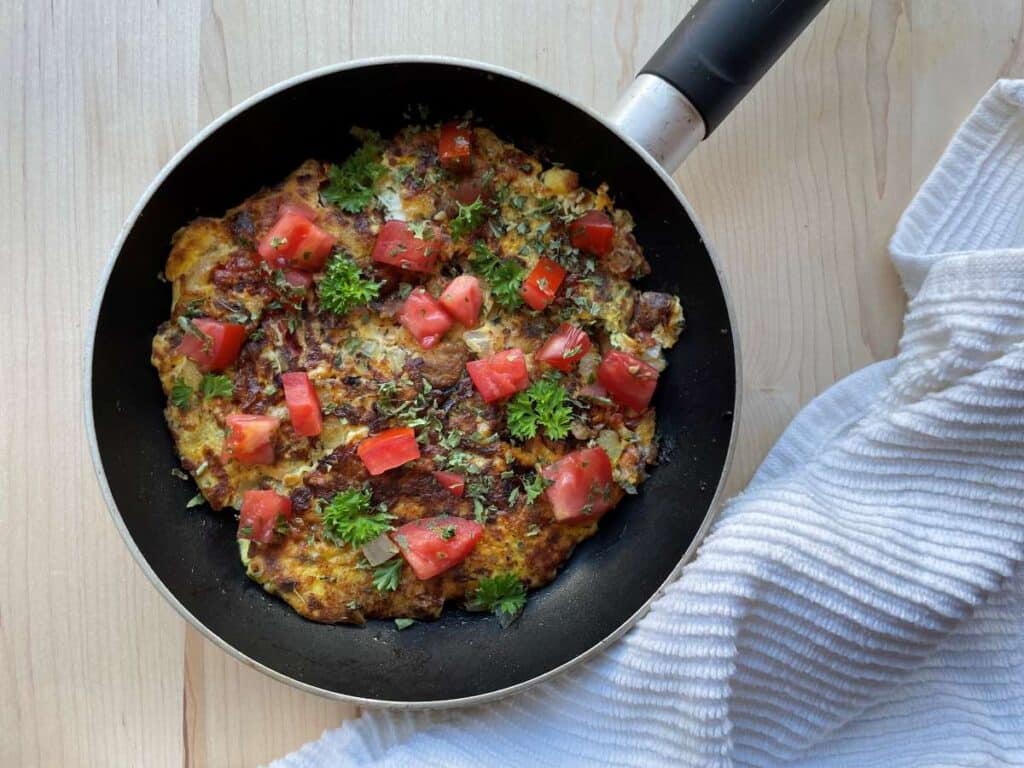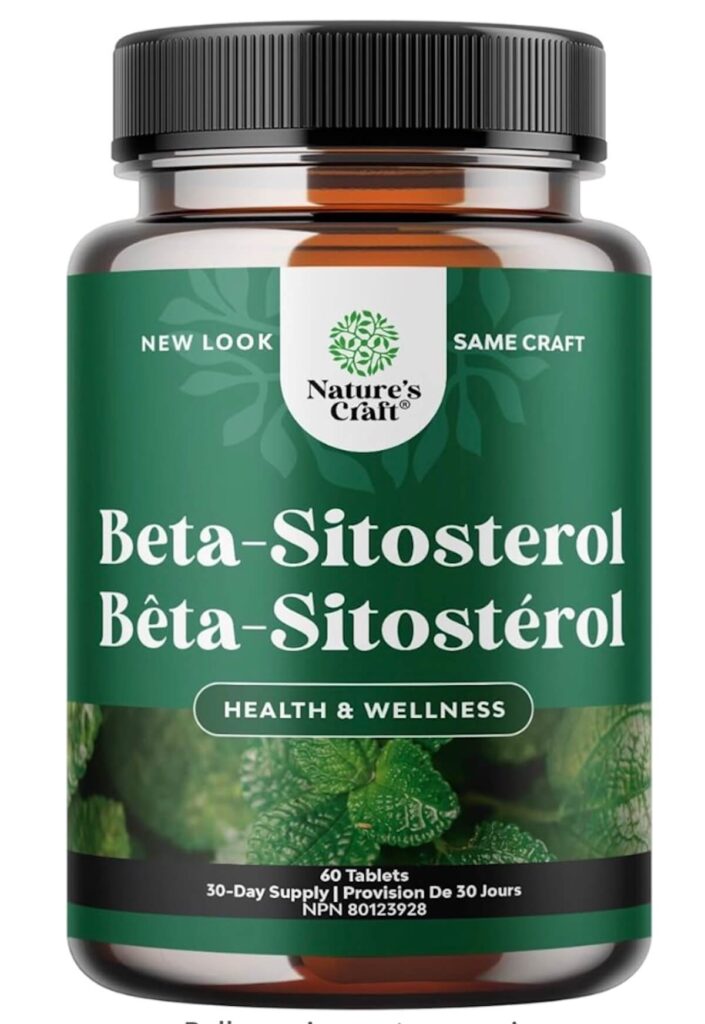A 7-day Low Cholesterol Diet Plan (printable version) and grocery list can be a great way to start a heart-healthy way of eating.
Cholesterol is a type of fat that is necessary for the proper functioning of the body. However, when there is too much cholesterol in the blood, it can accumulate in the arteries and form plaques, leading to a greater risk of heart disease and stroke. Therefore, it is essential to maintain healthy cholesterol levels.
Even though I am providing you with a 7-day meal plan to lower cholesterol, healthy eating needs to be individualized. If possible, I recommend consulting a healthcare professional like a Registered Dietitian, as the dietary requirements of each person may vary.
*Please note that this post contains clearly identified affiliate links. If you click on these links and choose to make a purchase, I may receive a commission (at no cost to you). As an Amazon Associate, I earn from qualifying purchases.
Top Takeaways
- A 7-day low cholesterol diet plan is a valuable tool for promoting heart-healthy eating habits, as high cholesterol levels can lead to artery plaque formation and increase the risk of heart disease and stroke.
- Understanding cholesterol, the difference between LDL (bad) and HDL (good) cholesterol, and recognizing the causes of high cholesterol, including diet, lack of exercise, and genetics, is crucial. Lifestyle changes, including adopting healthy diets like the Portfolio Diet, DASH Diet, Mediterranean Diet, or Plant-Based Diets, can effectively lower cholesterol levels.
- Nutrition plays a pivotal role in managing cholesterol levels. Shopping tips such as making lists, prioritizing fresh and whole foods, reading food labels, buying in bulk, and avoiding processed foods with unhealthy fats and sugars can facilitate healthier eating.
- Top Takeaways
- Pin It For Later
- What Is Cholesterol?
- Causes Of High Cholesterol (And How To Lower It!)
- Why Lower Cholesterol?
- Why Is Nutrition Important To Lower Cholesterol?
- What Is The Best Cholesterol Lowering Diet?
- What Nutrients Will Lower Cholesterol
- Do I Need To Worry About Dietary Cholesterol?
- What Foods To Eat To Lower Cholesterol?
- What Foods To Avoid?
- Other Meal Planning Tips
- How Else Can You Lower Cholesterol?
- 7-Day Low Cholesterol Diet Plan (Printable) With Grocery List
- Grocery List
- Final Thoughts
Pin It For Later
What Is Cholesterol?
Cholesterol is a waxy substance that is essential for the body to function properly. It is found in the cells and membranes of the body and plays a vital role in various bodily functions, such as producing hormones, aiding digestion, and building cells. However, when there is too much of it in the blood, it can build up in the walls of the arteries and lead to heart disease.
There are two types of cholesterol: low-density lipoprotein (LDL) and high-density lipoprotein (HDL). LDL cholesterol is commonly known as “bad” cholesterol, as it can contribute to the buildup of plaque in the arteries. On the other hand, HDL cholesterol is considered “good” cholesterol because it helps to remove LDL cholesterol from the bloodstream.
Causes Of High Cholesterol (And How To Lower It!)
High cholesterol can be caused by various factors, such as:
- diet high in saturated and trans fats
- lack of physical activity
- smoking
- genetics
Some factors cannot be controlled, such as genetics, however, other factors including lifestyle modifications, such as adopting a healthy diet and exercising regularly, can help manage cholesterol levels.
This is why I’ve created this low cholesterol diet menu pdf (and its printable!) to help you get started.
Why Lower Cholesterol?
Lowering cholesterol levels can reduce the risk of cardiovascular disease, heart disease and stroke. According to the Centers for Disease Control and Prevention (CDC), heart disease is the leading cause of death in the United States. High cholesterol is a significant risk factor for heart disease.
High cholesterol can have significant impacts on many areas of health beyond heart attack and stroke, underscoring the importance of managing cholesterol levels through healthy lifestyle habits and medical interventions as needed.
Here are some other conditions that can be linked to high cholesterol:
Peripheral Artery Disease (PAD)
High cholesterol levels can cause a buildup of plaque in the arteries throughout the body, including those in the legs. This can cause PAD, which can result in pain, numbness, and weakness in the legs, and can also increase the risk of infection and gangrene.
Atherosclerosis
High cholesterol can cause atherosclerosis, a condition in which plaque builds up in the arteries, reducing blood flow to the organs and increasing the risk of heart attack and stroke. Check out this list of foods that unclog arteries or this article about a diet after stent placement or peripheral artery disease diet.
Type 2 Diabetes
High cholesterol can increase the risk of developing type 2 diabetes by impairing the body’s ability to use insulin effectively.
High Blood Pressure
Elevated cholesterol can increase blood pressure, damaging the arteries and increasing the risk of heart disease and stroke. Check out this list of foods that lower blood pressure and avoid this list of foods that cause stroke.
Gallstones
High cholesterol levels can lead to the formation of gallstones, which are hard deposits that can form in the gallbladder and cause pain and discomfort.
Non-alcoholic Fatty Liver Disease
High cholesterol can cause fatty deposits to build up in the liver, leading to non-alcoholic fatty liver disease, which can cause liver damage and increase the risk of liver cancer.
Dementia
Studies have shown that high cholesterol levels may increase the risk of developing dementia, including Alzheimer’s disease. The Mind Diet pros and cons article is a great resource if you are interested in learning more about this.
Why Is Nutrition Important To Lower Cholesterol?
Nutrition plays a crucial role in managing cholesterol levels. Studies have shown that a healthy diet can help lower LDL (bad) cholesterol levels and increase HDL (good) cholesterol levels. A diet high in fruits, vegetables, whole grains, lean proteins, and olive oil can help manage cholesterol levels.
The following ways of eating have been shown to lower cholesterol levels.
The Portfolio Diet
The portfolio diet was developed in the early 2000s and is effective in reducing LDL (“bad”) cholesterol levels. The Portfolio Diet emphasizes a combination of cholesterol-lowering foods, such as plant sterols, soy protein, nuts, and high-fiber foods like oat water and barley flakes (1).
The DASH Diet
The Dietary Approaches to Stop Hypertension (DASH diet) diet is a heart-healthy eating plan that emphasizes fruits, vegetables, whole grains, lean protein sources, and low-fat dairy products. Several studies have found that the DASH diet can help lower cholesterol levels, as well as blood pressure (2).
The Mediterranean Diet
The Mediterranean diet is a plant-based eating pattern that emphasizes fruits, vegetables, whole grains, nuts, seeds, and healthy fats, such as olive oil and fatty fish like Pacific and Atlantic salmon. Studies have shown that the Mediterranean diet can help lower LDL cholesterol levels and reduce the risk of heart disease (3).
Plant-Based Diets
Plant-based diets or a vegetarian diet that emphasizes whole, minimally processed foods can also help lower cholesterol levels like these juice recipes or natural drinks. . Several studies have found that vegetarian and vegan diets can be effective in reducing LDL cholesterol levels (4).
I’ve combined all the recommended diets into this low cholesterol diet plan (pdf) for ease of use.

What Is The Best Cholesterol Lowering Diet?
Nutrition plays a crucial role in managing cholesterol levels. Studies have shown that a healthy diet can help lower LDL (bad) cholesterol levels and increase high-density lipoproteins HDL (good) cholesterol levels. A diet rich in whole foods like fruits, vegetables, whole grains, lean proteins, and heart-healthy fats can help manage cholesterol levels, like in this low cholesterol diet plan pdf.
A healthy diet can help lower low-density lipoproteins LDL (bad) cholesterol levels. A diet high in saturated and trans-fat can raise LDL cholesterol levels, which increases the risk of heart disease.
On the other hand, a diet high in fruits, vegetables, whole grains, lean proteins, and healthy fats can help lower LDL cholesterol levels, like the following 7-day meal plan and grocery list to lower cholesterol.
These foods are rich in nutrients that have been shown to have cholesterol-lowering effects, such as fiber, plant sterols and stanols, omega-3 fatty acids (flaxseed or chia and hemp), and monounsaturated and polyunsaturated fats.
This low-cholesterol diet plan (printable) is high in fruits, vegetables, whole grains, lean proteins, and healthy fats, and can increase HDL (good) cholesterol levels. HDL cholesterol helps remove excess cholesterol from the bloodstream and carries it back to the liver to be processed and excreted. Eating a diet rich in fruits, vegetables, whole grains, lean proteins, and healthy fats can help increase HDL cholesterol levels, which is important for overall heart health.
In addition to lowering LDL cholesterol and increasing HDL cholesterol, a healthy diet can provide a range of other benefits for managing cholesterol levels. For example, a diet high in fiber can help reduce inflammation in the body, which is important for preventing heart disease. Eating a diet rich in this anti-inflammatory food list or low cholesterol food list, like fruits and vegetables can also provide important vitamins and minerals that are essential for heart health, such as vitamin C, vitamin E, potassium, and magnesium.
What Nutrients Will Lower Cholesterol
Certain nutrients have been shown to help lower cholesterol levels. These include fiber, omega-3 fatty acids, plant sterols and stanols, and monounsaturated and polyunsaturated fats.
Fiber
Eating a diet high in soluble fiber has been shown to help lower LDL cholesterol levels. Soluble fiber can be found in foods like oats, barley, beans, lentils, fruits, and vegetables.
When soluble fiber is digested, it then forms a gel-like substance that binds with cholesterol in the intestines and prevents it from being absorbed into the bloodstream.
Omega-3 Fatty Acids
Omega-3 fatty acids are a type of polyunsaturated fat that can be found in fatty fish like salmon, mackerel, and sardines, as well as in walnuts and flaxseeds. Studies have shown that consuming omega-3 fatty acids can help reduce triglyceride levels and lower LDL cholesterol levels.
Plant Sterols and Stanols
Plant sterols and stanols are compounds that are naturally found in fruits, vegetables, nuts, and seeds. They have a similar structure to cholesterol and can help block the absorption of cholesterol in the intestines.
Plant sterols and stanols can be found in fortified foods like margarine, or yogurt.
If you are interested in purchasing a supplement, here are some examples.
Monounsaturated And Polyunsaturated Fats
Monounsaturated and polyunsaturated fats are healthy fats that can be found in foods like avocados, nuts, seeds, and olive oils. These fats can help lower LDL cholesterol levels when they are used to replace saturated and trans fats in the diet.
Do I Need To Worry About Dietary Cholesterol?
The American Heart Association states that dietary cholesterol found in animal products has a minimal impact on cholesterol levels in most people. However, individuals with high cholesterol levels or other risk factors for heart disease may need to limit their intake of dietary cholesterol.
What Foods To Eat To Lower Cholesterol?
The American Heart Association recommends (5):
- Whole grains: Oatmeal, brown rice, quinoa
- Fruits and vegetables: Berries, citrus fruits, leafy greens, broccoli, sweet potatoes
- Plant protein: Legumes, beans, lentils tofu, nuts and seeds
- Lean proteins: Fish like salmon and sardines, chicken, turkey
- Nuts and seeds: Almonds, walnuts, chia seeds, flaxseeds
- Healthy fats: olive oil and avocado oil
Or try this cholesterol diet plan (pdf) to get started today.
What Foods To Avoid?
To help manage cholesterol levels, it’s important to limit or avoid foods that are high in saturated and trans fats. These types of fats can raise LDL (bad) cholesterol levels, which increases the risk of heart disease. Here are some examples of foods to avoid or limit:
- Fatty meats: Red meat like (beef, pork, and lamb) and processed meats like sausages and bacon are high in saturated fat and should be limited.
- Dairy products: Full-fat dairy products like whole milk, cream, cheese, and butter are high in saturated fat and should be limited. Low-fat or non-fat dairy products are a healthier option.
- Fried foods: Fried foods like French fries, fried chicken, and donuts are high in trans fats and should be avoided or limited.
- Baked goods: Baked goods like cakes, cookies, and pastries are often made with hydrogenated oils, which are high in trans fats. These should be limited or avoided.
- Processed foods: Many processed foods like chips, crackers, and snack foods are high in saturated and trans fats. It’s important to read food labels and choose healthier options.
Other foods to avoid can be found on this list of foods that cause stroke.
Other Meal Planning Tips
Cooking Tips
Use Healthy Cooking Methods
Instead of frying, try baking, grilling, roasting, or steaming your foods. These methods help retain the nutrients in your food without adding extra fat.
Flavor Your Food With Herbs And Spices
Instead of using salt or high-fat seasonings like butter or cream, try using herbs and spices like garlic, onion, basil, rosemary, and thyme to add flavor to your food.
Or choosing low sodium foods when eating out like these low sodium foods at subway, burger king and tim hortons.
Avoid Trans Fats
Trans fats can raise LDL (bad) cholesterol levels and increase the risk of heart disease. Avoid cooking with partially hydrogenated oils or foods that contain them, such as fried foods, baked goods, and snack foods.
Choose Low-Fat Cooking Methods
When cooking with meat, remove any visible fat and choose lean cuts of meat like chicken breast, turkey breast, and fish. Or plant-based proteins like beans, legumes and tofu.
Grocery Shopping Tips
Make A List
Before going grocery shopping, make a list of the foods you need to buy. This can help you avoid impulse purchases and stick to your healthy eating plan. A heart healthy shopping guide in addition to the low cholesterol diet plan (printable), can be downloaded here.
Shop The Perimeter Of The Store
The perimeter of the grocery store usually contains fresh fruits and vegetables, lean proteins, and low-fat dairy products. Try to focus your shopping on these areas.
Read Food Labels
Check the nutrition labels on foods before you buy them. Look for foods that are low in saturated and trans fats and high in fiber.
Buy In Bulk
Buying foods like whole grains, nuts, and seeds in bulk can be a cost-effective way to add healthy foods to your diet.
Avoid Processed Foods
Processed foods like snack foods, baked goods, and frozen dinners can be high in unhealthy fats and added sugars. Try to choose whole, unprocessed foods and alternatives to deli meat as much as possible.
Meal Planning
Meal planning can be a helpful tool for managing your cholesterol levels. Planning your meals can help you make healthier choices and stick to your dietary goals. It can also save you time and money by reducing the number of trips you need to make to the grocery store and helping you avoid impulse purchases.
When meal planning, aim to include a variety of nutrient-dense foods, including fruits, vegetables, whole grains, lean proteins, and healthy fats. Consider planning meals that are high in fiber, which can help lower LDL (bad) cholesterol levels, and low in saturated and trans fats, which can raise LDL cholesterol levels.
You can also try batch cooking and meal prep to make sticking to your dietary goals easier throughout the week. This involves cooking larger quantities of food and portioning it out for meals throughout the week. You can also prep ingredients in advance, such as chopping vegetables or marinating meats, to make cooking meals easier and faster.
Remember to be flexible with your meal plan and adjust as needed. Listen to your body and make changes to your dietary plan as necessary to help manage your cholesterol levels.
How Else Can You Lower Cholesterol?
- Get regular exercise: Regular exercise can help lower LDL (bad) cholesterol levels and raise HDL (good) cholesterol levels. Aim for at least 30 minutes of moderate intensity exercise most days of the week as per the American Heart Association.
- Quit smoking: Smoking can raise LDL (bad) cholesterol levels and increase the risk of heart disease. Quitting smoking can help lower cholesterol levels and reduce the risk of heart disease.
- Lose weight: Being overweight or obese can raise LDL (bad) cholesterol levels and lower HDL (good) cholesterol levels. Losing weight through a healthy diet and regular exercise can help lower cholesterol levels.
- Limit alcohol intake: Drinking too much alcohol can raise triglyceride levels and increase the risk of heart disease. It’s recommended to limit alcohol intake to no more than one drink per day for women and two drinks per day for men.
- Manage stress: Chronic stress can raise LDL (bad) cholesterol levels and increase the risk of heart disease. Finding healthy ways to manage stress, such as meditation or yoga, can help lower cholesterol levels.
7-Day Low Cholesterol Diet Plan (Printable) With Grocery List
The following low cholesterol diet plan (printable) can be downloaded here.
| Meal | Monday | Tuesday | Wednesday | Thursday | Friday | Saturday | Sunday |
| Breakfast | Oatmeal with banana, walnuts | Greek yogurt with blueberries and almonds | Scrambled tofu and spinach and whole-grain toast | Berry smoothie | Avocado toast with feta cheese | Greek yogurt with strawberries and granola | Blueberry cheesecake overnight oats |
| Snack | Apple slices with almond butter | Orange slices with pistachios | Pear slices with almonds | Greek yogurt | Cottage cheese with sliced peaches | Apple slices with almond butter | Greek yogurt |
| Lunch | Grilled chicken salad with mixed greens, cherry tomatoes, cucumber, and vinaigrette | Turkey and avocado sandwich with mixed greens and cherry tomatoes on whole grain bread | Lentil soup with a mixed green salad | Tuna salad with mixed greens and cherry tomatoes | Grilled chicken Caesar salad with whole grain croutons | Quinoa and black bean salad with mixed greens and cherry tomatoes | Grilled chicken wrap with mixed greens and cherry tomatoes on whole grain tortilla with hummus |
| Snack | Carrot sticks with hummus | Roasted chickpeas | Steamed edamame | Roasted almonds | Sliced bell peppers with hummus | Roasted chickpeas | Air-popped popcorn |
| Dinner | Baked salmon with roasted sweet potatoes and broccoli | Whole wheat pasta with roasted vegetables | Grilled chicken with roasted brussels sprouts and brown rice | Grilled salmon with roasted asparagus and quinoa | Baked chicken with roasted sweet potatoes and beans | Shrimp stir-fry with mixed vegetables and rice | Tofu stir fry with a green salad |
Grocery List
| Produce | Dairy | Meat and Alternatives | Pantry | Snacks |
| Bananas | Greek yogurt | Salmon | Oatmeal | Roasted almonds |
| Walnuts | Cottage cheese | Chicken breast | Whole wheat pasta | Roasted chickpeas |
| Sweet potatoes | Feta cheese | Turkey breast | Chickpeas | |
| Apples | Shrimp | Rice | ||
| Almond butter | Tuna | Olive oil | ||
| Blueberries | Tofu | Balsamic vinegar | ||
| Almonds | Caesar dressing | |||
| Spinach | Whole Grain Tortillas | |||
| Pears | Quinoa | |||
| Bell Peppers | Black beans | |||
| Avocado | Granola | |||
| Strawberries | Lentils | |||
| Asparagus | Whole grain bread | |||
| Tomatoes | Granola | |||
| Mixed greens | Edamame | |||
| Cherry tomatoes | ||||
| Cucumber | ||||
| Carrots | ||||
| Hummus | ||||
| Broccoli | ||||
| Brussel sprouts |
Final Thoughts
Following this FREE low cholesterol diet plan (pdf) can be a great way to jumpstart a healthier diet and achieve your health goals.
However, it’s important to keep in mind that everyone’s nutritional needs and preferences are different, and consulting with a registered dietitian can help you personalize your diet to best fit your individual needs.
Check out this blog post to learn how long it takes to lower cholesterol with diet.
So, while a free low cholesterol diet plan (printable) can be a helpful tool, always remember to seek the advice of a registered dietitian before making any significant changes to your diet.













